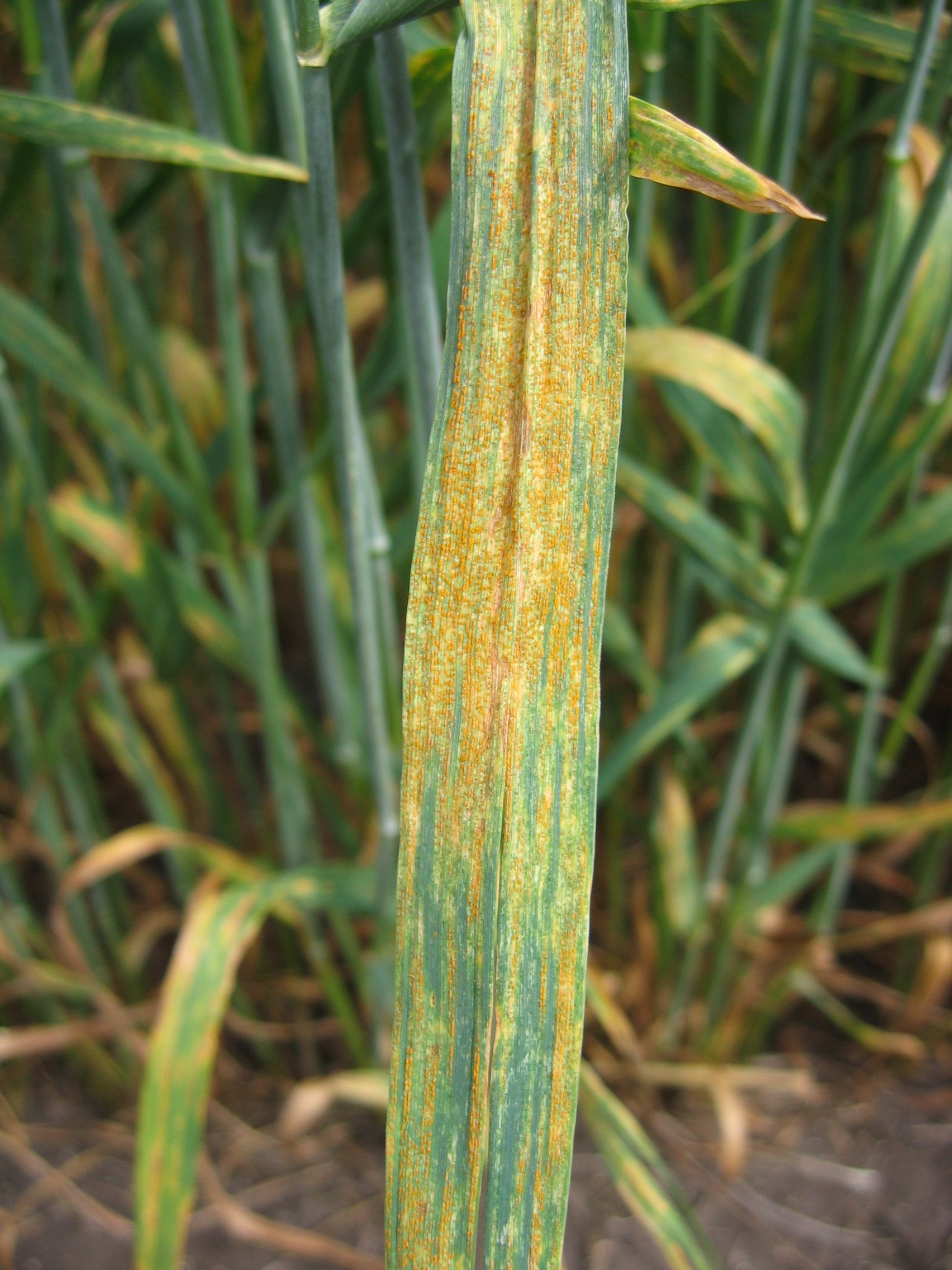Symptoms
There are no known Barley stripe rust pathogens currently in Australia. Therefore any barley plants with symptoms of stripe rust should be sent for testing.
Closely related to the Wheat stripe rust fungus, symptoms of the two diseases are very similar. The fungus produces stripes of rust pustules between the veins of the leaves. Pustules may also form on the heads. In susceptible cultivars the entire leaf blade may become covered with the rust. In barley, the pustules may be more yellow than orange.
Organism
Puccinia striiformis f.sp. hordei
Host range
Hordeum spp. and Triticum spp.
The primary host of Barley stripe rust is spring barley with certain races of rust surviving on wild barley species such as Hordeum jubatum (foxtail barley) and H. leporinum, H. glaucum, H. murinum (barley grass complex).
Method of spread
Wind, contaminated machinery, plant debris and clothing. The major commercial spring barley varieties are susceptible to this disease.
Conditions favouring disease
Barley stripe rust development is most rapid at temperatures between 10°C and 15°C. It requires a minimum of three hours of leaf wetness (intermittent rain or dew) for new infections to occur.
Confused with?
Barley grass stripe rust and Wheat stripe rust. While no Barley stripe rust is present in Australia, Barley grass stripe rust and Wheat stripe rust can both cause similar symptoms on commercial barley cultivars. Hence any commerical barley cultivars with stripe rust symptoms should be sent in for testing.
Puccinia hordei (Barley leaf rust) This species is cosmopolitan and found in Australia.
Where?
Asia, Europe, Central Africa, North, Central and South America.

Image 13. Stripe rust forms yellow orange stripes along leaf veins.
Source: Agriculture Victoria.


